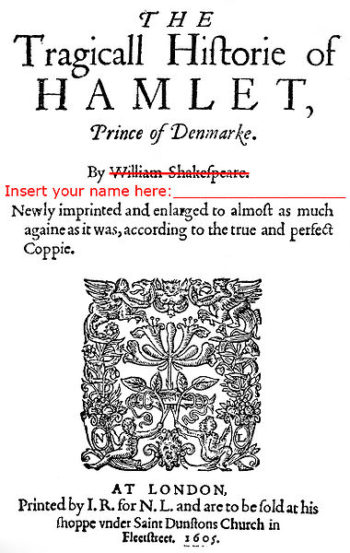18.1: Outcome: Writing Ethically
- Page ID
- 5683
\( \newcommand{\vecs}[1]{\overset { \scriptstyle \rightharpoonup} {\mathbf{#1}} } \) \( \newcommand{\vecd}[1]{\overset{-\!-\!\rightharpoonup}{\vphantom{a}\smash {#1}}} \)\(\newcommand{\id}{\mathrm{id}}\) \( \newcommand{\Span}{\mathrm{span}}\) \( \newcommand{\kernel}{\mathrm{null}\,}\) \( \newcommand{\range}{\mathrm{range}\,}\) \( \newcommand{\RealPart}{\mathrm{Re}}\) \( \newcommand{\ImaginaryPart}{\mathrm{Im}}\) \( \newcommand{\Argument}{\mathrm{Arg}}\) \( \newcommand{\norm}[1]{\| #1 \|}\) \( \newcommand{\inner}[2]{\langle #1, #2 \rangle}\) \( \newcommand{\Span}{\mathrm{span}}\) \(\newcommand{\id}{\mathrm{id}}\) \( \newcommand{\Span}{\mathrm{span}}\) \( \newcommand{\kernel}{\mathrm{null}\,}\) \( \newcommand{\range}{\mathrm{range}\,}\) \( \newcommand{\RealPart}{\mathrm{Re}}\) \( \newcommand{\ImaginaryPart}{\mathrm{Im}}\) \( \newcommand{\Argument}{\mathrm{Arg}}\) \( \newcommand{\norm}[1]{\| #1 \|}\) \( \newcommand{\inner}[2]{\langle #1, #2 \rangle}\) \( \newcommand{\Span}{\mathrm{span}}\)\(\newcommand{\AA}{\unicode[.8,0]{x212B}}\)
Skills to Develop
- Analyze the definition of academic dishonesty
- Analyze the definition of intentional and unintentional plagiarism
- Analyze reasons for concerns about plagiarism and academic dishonesty in academic settings
- Analyze strategies to avoid intentional and unintentional plagiarism and academic dishonesty, including summarizing, paraphrasing, and quoting
Analyze issues of plagiarism and academic dishonesty

Figure \(\PageIndex{1}\) - An obvious example of plagiarism.
Learning to correctly synthesize and utilize sources is a practice that takes awareness and effort, and even published authors sometimes find themselves in trouble with accusations of plagiarism. Consider these two examples:
- Stephen Ambrose (1936-2002), a highly regarded historian and writer, was accused of plagiarizing several passages of one of his later books. Although Ambrose had noted the original sources in footnotes, he had neglected to use quotation marks for passages he reproduced. Plagiarism stained Ambrose’s reputation even after his death.
- Harvard student Kaavya Viswanathan (born 1987) authored her first novel at the age of 17. A major publisher offered her a six-figure advance and released the book in 2006. DreamWorks SKG bought the rights to make it into a movie. Everything was great for Viswanathan until a reader found that she had plagiarized passages from another writer. Viswanathan’s novel was pulled from bookstores and DreamWorks dropped the film project. Her career as a novelist may have come to an embarrassing end.
In this section, you’ll learn how to avoid plagiarism (and the fate of these authors!) and how to appropriately include quotes, summaries, and paraphrases in your writing.
The Learning Activities for This Outcome Include
- Video: Academic Integrity
- Text: Defining Plagiarism
- Text: Avoiding Plagiarism
- Text: Using Sources in Your Writing
- Self-Check: Writing Ethically
- Try It: Writing Ethically

